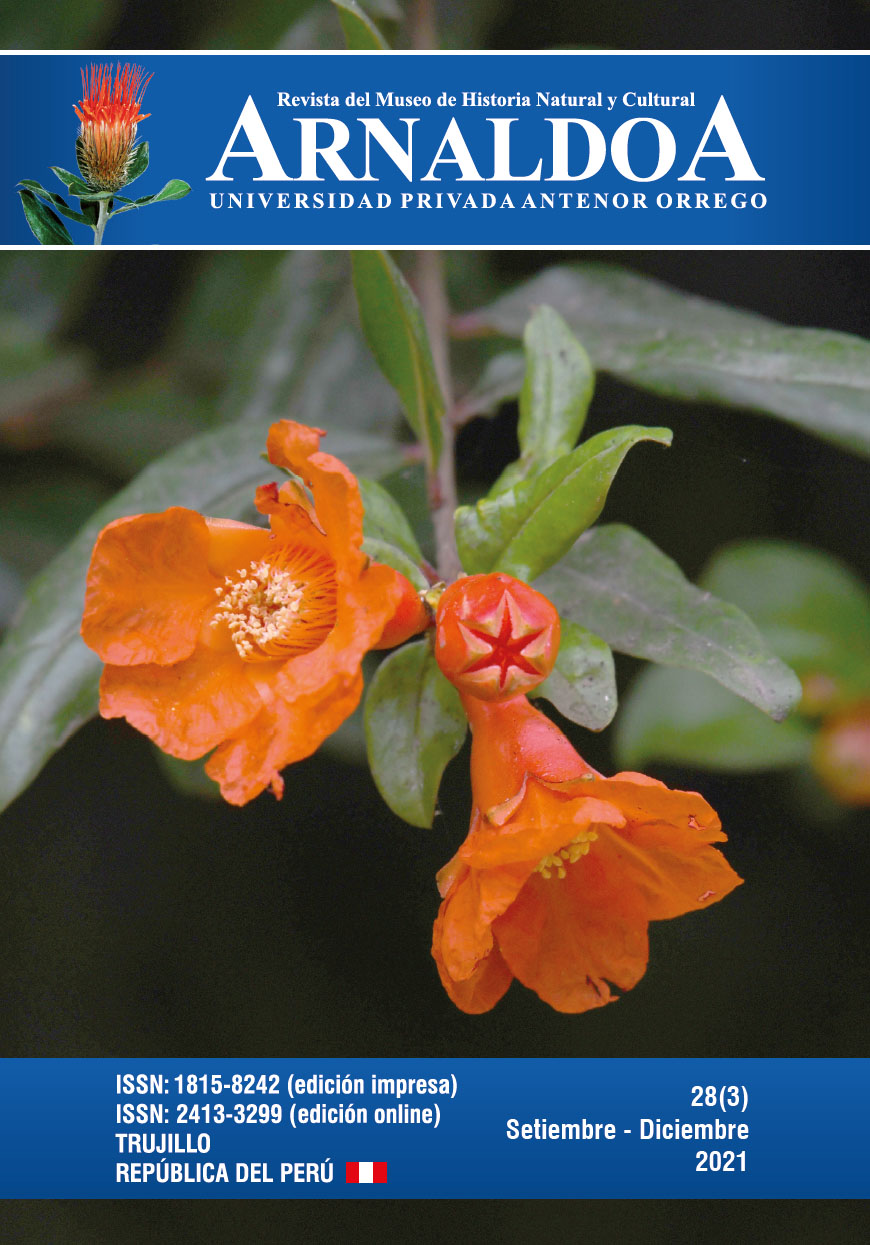Spatial and temporal patterns of potentiallykey flora species in the agrarian system ofthe district of Cajatambo, Lima, Peru
DOI:
https://doi.org/10.22497/arnaldoa.311.31104Keywords:
Plant cover, isolines of plant cover, maps and patterns of spatial and temporal variationAbstract
A potentially key flora species study was conducted in the district of Cajatambo, Lima, Peru
through their spatial and temporal patterns and population distribution over time. The records
were made during 2015 and 2016 using 44 transects of 30 meters, in 9 plant formations. The selection
of potentially key species was made by the contribution of the cover in diferent plant formations,
contribution in the change from one plant formation to another and the cultural importance.
The determination of spatial and temporal patterns were made using Taylor´s Law, while the
population distribution by maps of spatial and temporal variation with isolines of plant cover with
the QGIS 3.16.16 Program. Sixteen potentially key species are proposed, of which 12 and 4 species
showed posible refuge and mobile and fixed hot-spots patterns, respectively. Agricultural zones,
scrublands and grassland were important plant formations for the presence of potentially key flora
species. Maps of spatial and temporal variation show the dynamics of plant resources used by
cajatambinos such as Trifolium repens “white clover” in cattle foraging in the field and Minthostachys
mollis “muña” a medicinal plant mostly collected. Because potentially key species providing plant
resources for subsistence in times when it becames more dificult to obtain resources, contribute to
the sustainability of the agrarian system of the distric of Cajatambo.
Downloads
Downloads
Published
Issue
Section
License
Copyright (c) 2025 Aldo Ceroni Stuva, Julio Salvador Rodríguez, Zulema Quinteros Carlos

This work is licensed under a Creative Commons Attribution 4.0 International License.
By submitting a paper to the journal, it is understood that the authors agree to transfer the publication rights to the journal once it is accepted.
It is permitted to share and adapt the contents of this journal in any medium or format always if the original source is properly cited and there are not commercial purposes.







